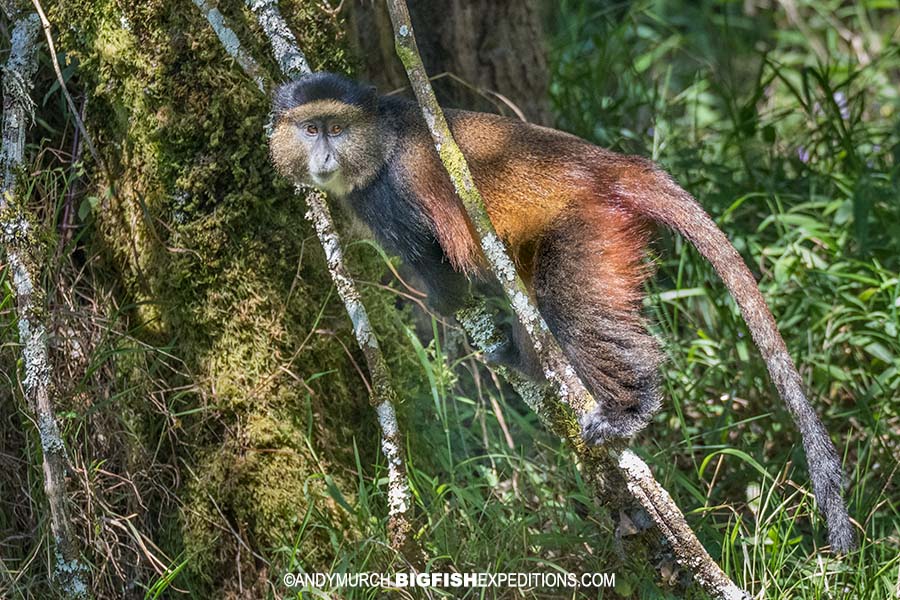Big Fish Expeditions 2019 Primate Safari in a Nutshell
Another fantastic trip with 14 species of primates including an amazing encounter with a family of 15 gorillas. Plus, all the other key species we were hoping to see and one rare primate that I have not seen before. Not to mention, huge herds of antelope, buffalo and elephants in Murchison Falls and the Kazinga Channel. And lets not forget the night drive with a large pride of lions on a fresh kill. Incredible!
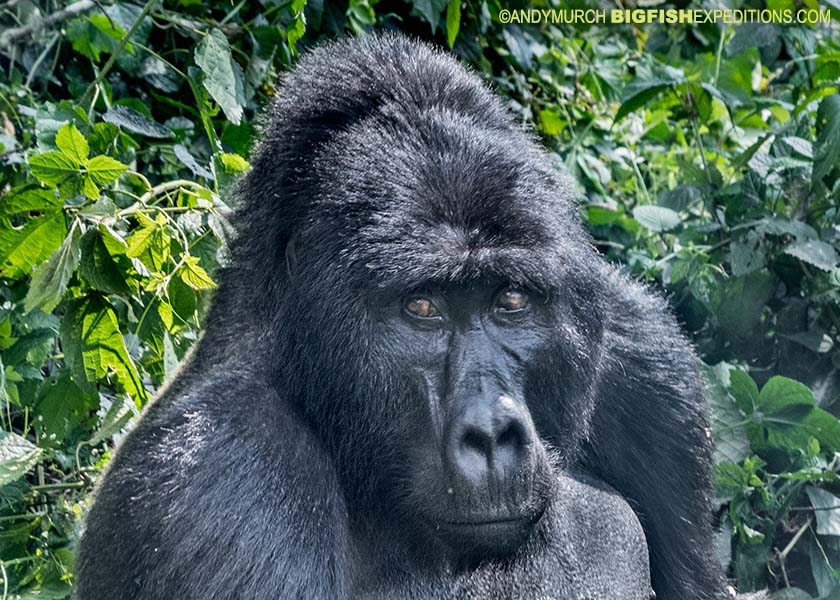
The trip started with a walk with Rhinos in Ziwa Rhino Sanctuary. We ran into two sets of mom’s with calves and saw two large male rhinos chasing each other back and forth to win the attention of a female in heat. It was especially nice to see one of the youngest newborns of the year trotting along behind his mom. In year’s to come, this new generation of rhinos will be released into other parks around Uganda.
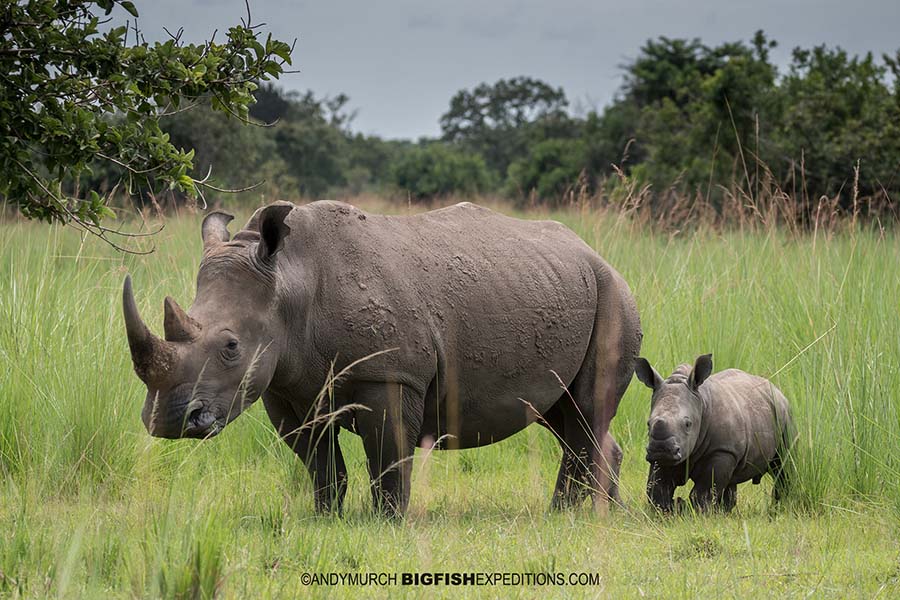
After Ziwa, we continued north to Murchison Falls National Park and visited the spectacular waterfall that gives the park its name. As soon as we entered the park, we started to see groups of Olive Baboons. To avoid predators, the like to hang out on the edges of the trails so they are extremely easy to photograph.
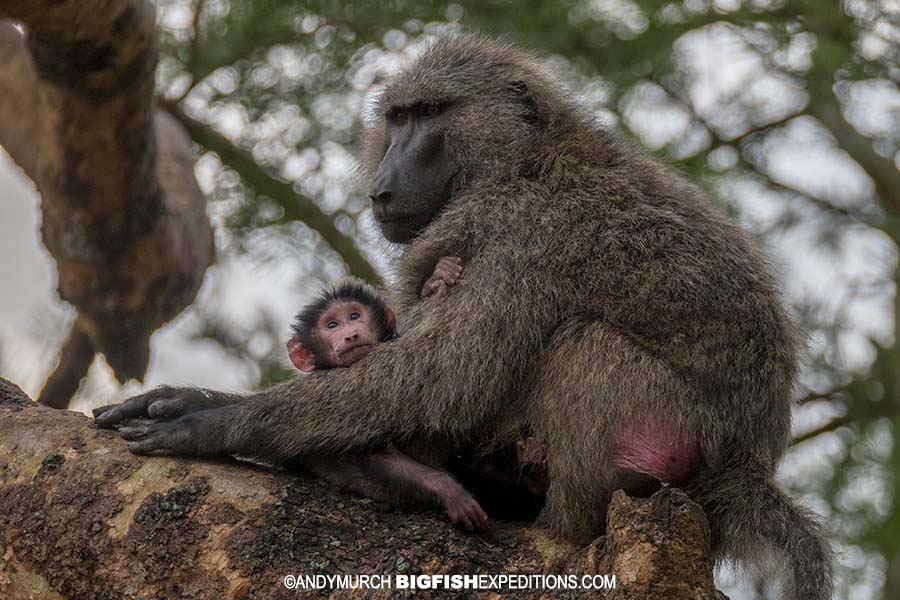
The next morning we ventured into the park for our first game drive. Virtually everywhere you look in Murchison there is some kind of animal staring back at you or going about its business. This year we stayed in the northern sector where there is an abundance of Patas Monkeys; a lanky species that lives on the savannah and stands erect like a meerkat to look over the long grass for predators. Patas monkeys are the world’s fastest primate species, capable of short bursts of speeds in excess of 50kph. One of their favorite foods is mushrooms.
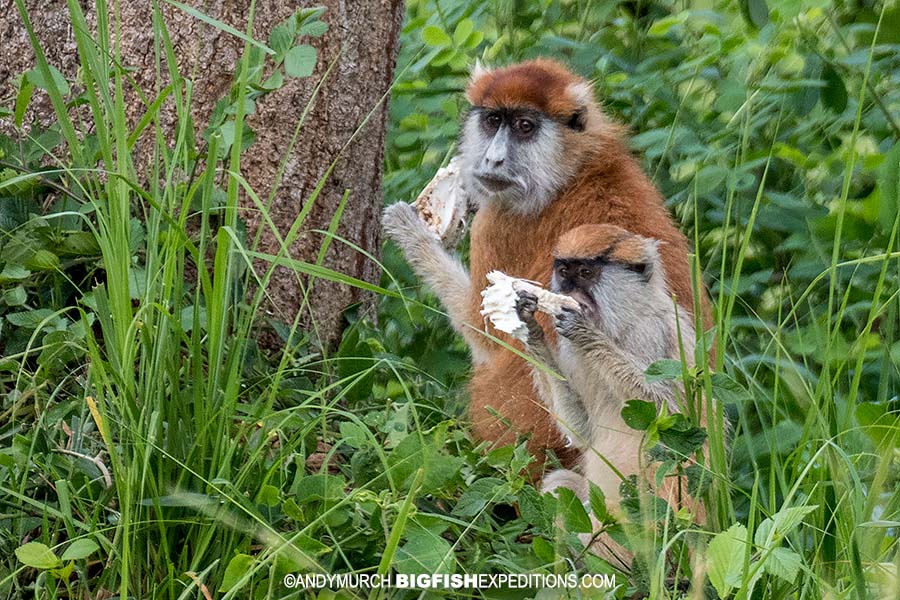
We must have seen 200 elephants during the first morning drive. Some were loners but most were travelling in large herds or small family groups.
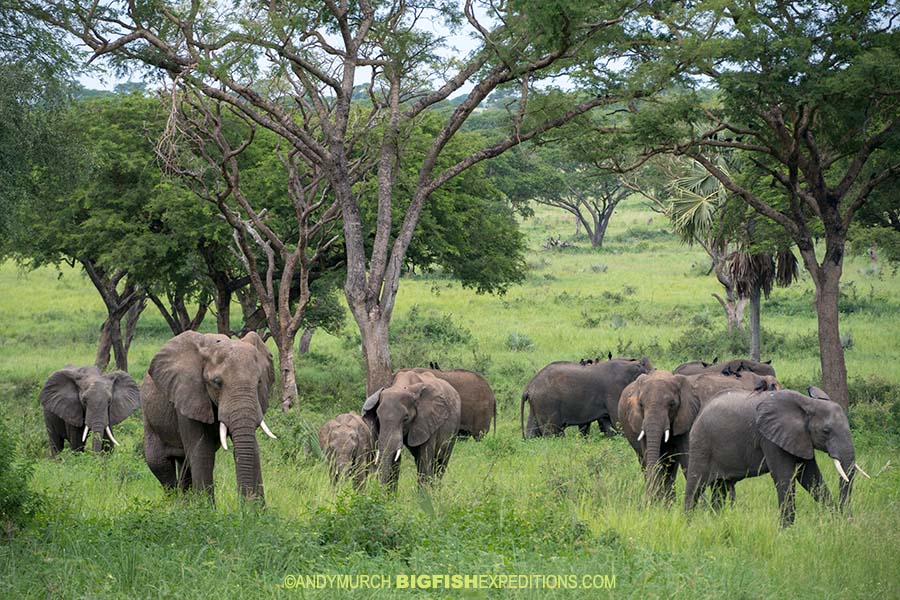
One calf in particular was so small that he must have been only a few days old, hiding under his mother’s legs.
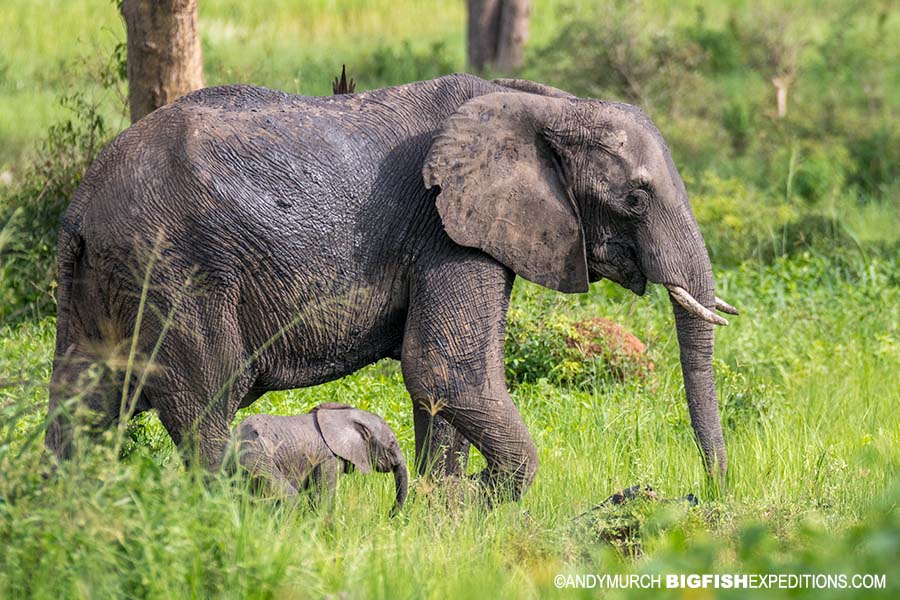
Murchison has an enormous amount of antelopes. There are more than 40,000 Uganda Cob thaat form huge herds, small families of oribi (a beautiful little antelope species), hundreds of Jackson’s Hartebeest, duikers, reeboks and many more.
There are also more than 900 Rothschilds Giraffes. Seeing a giraffe in the wild is impressive. Seeing a herd of foraging giraffes is unforgettable!
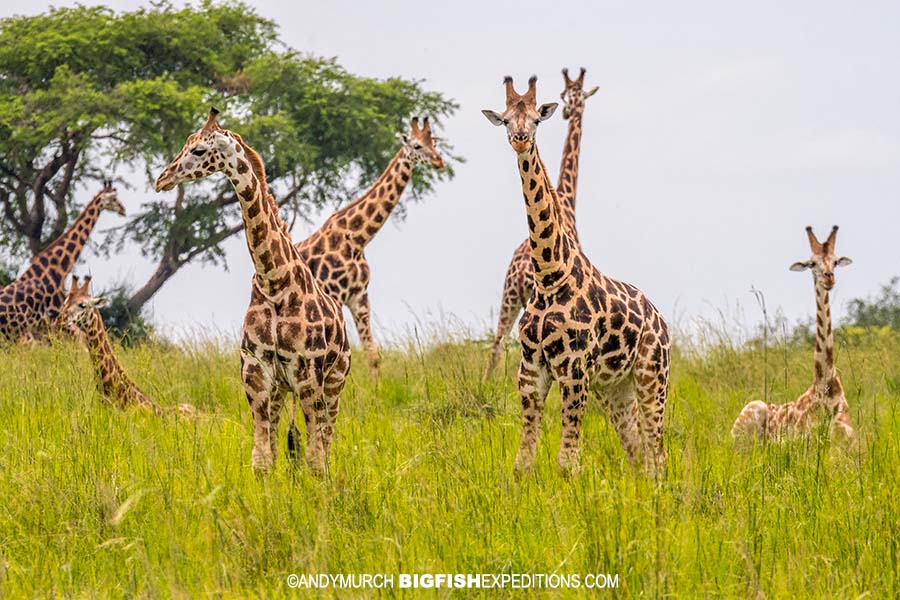
We stopped for coffee near the Nile where there are large floats of hippos but I knew we would see even more later in the trip so I wandered into the surrounding bush looking for yellow-winged bats; a species that often roosts in that area.
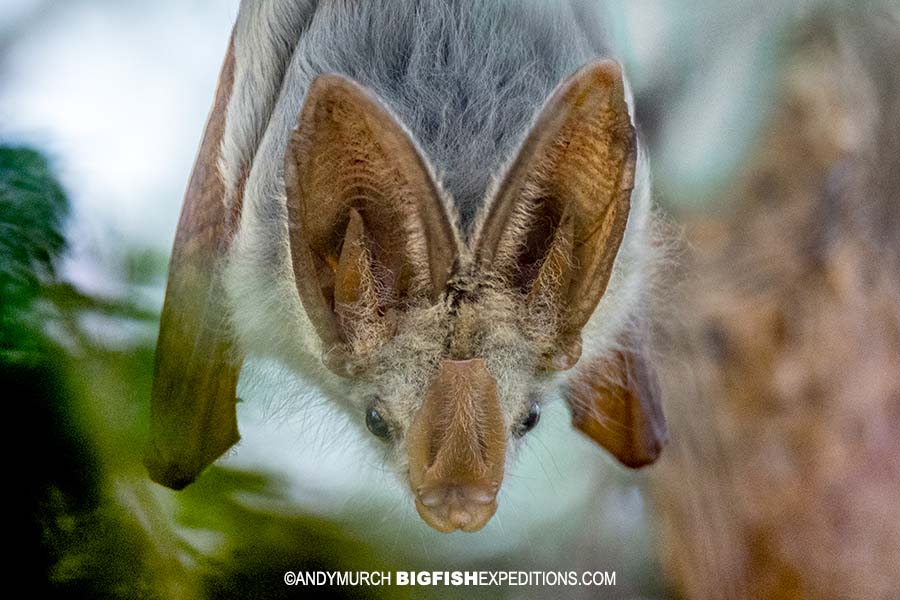
Our afternoon game drive went well too, and then after dinner, we went on a night drive to look for nocturnal predators. It was an amazing success! The evening started with a pride of eight lions on the hunt.
Moving on, we ran into lots of mongooses and civets looking for smaller prey and then after a fleeting glimpse of a leopard, we came across a larger pride of lions (perhaps a dozen in total) devouring a freshly killed cob.
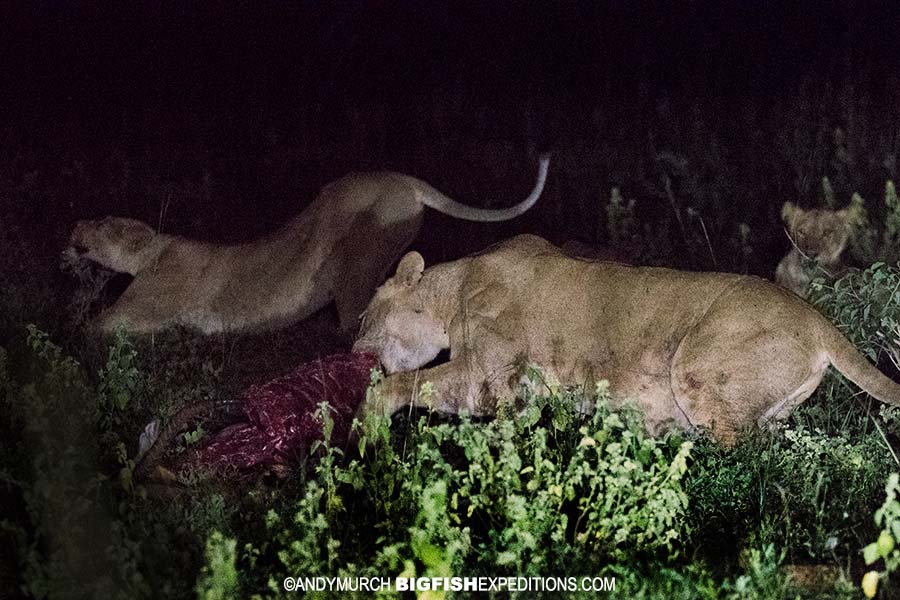
While the adults ate their fill, small cubs played together in the darkness or stayed close to their watchful mothers.
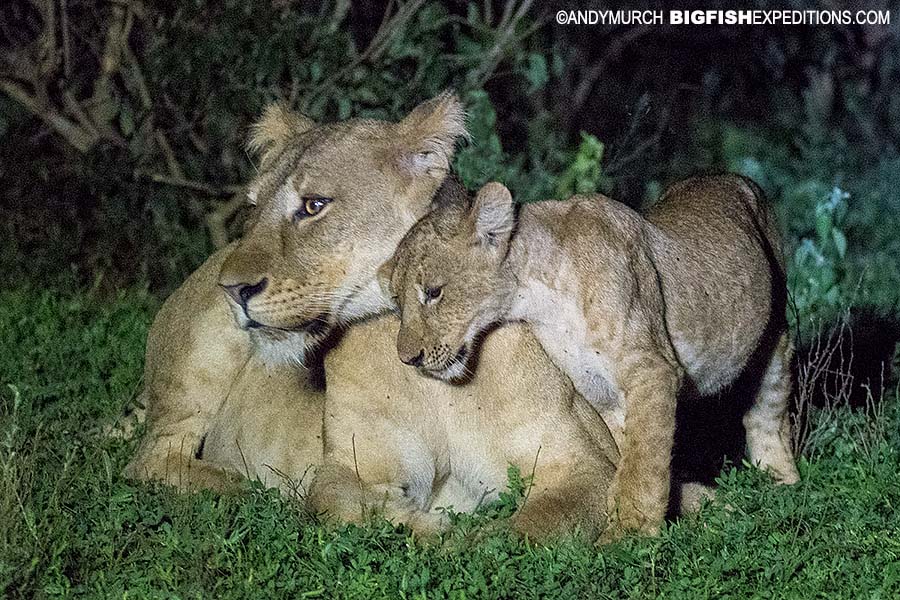
After Murchison we headed to Kibale National Park; a fantastic forested area with a huge diversity of primates. We arrived in the evening and enjoyed a great night walk looking for Gallegos; tiny nocturnal primates with huge eyes. We spotted two species: Demidof’s Gallegos and Thomas’s Gallegos. One Thomas’s stopped climbing long enough for us to take some respectable pictures.
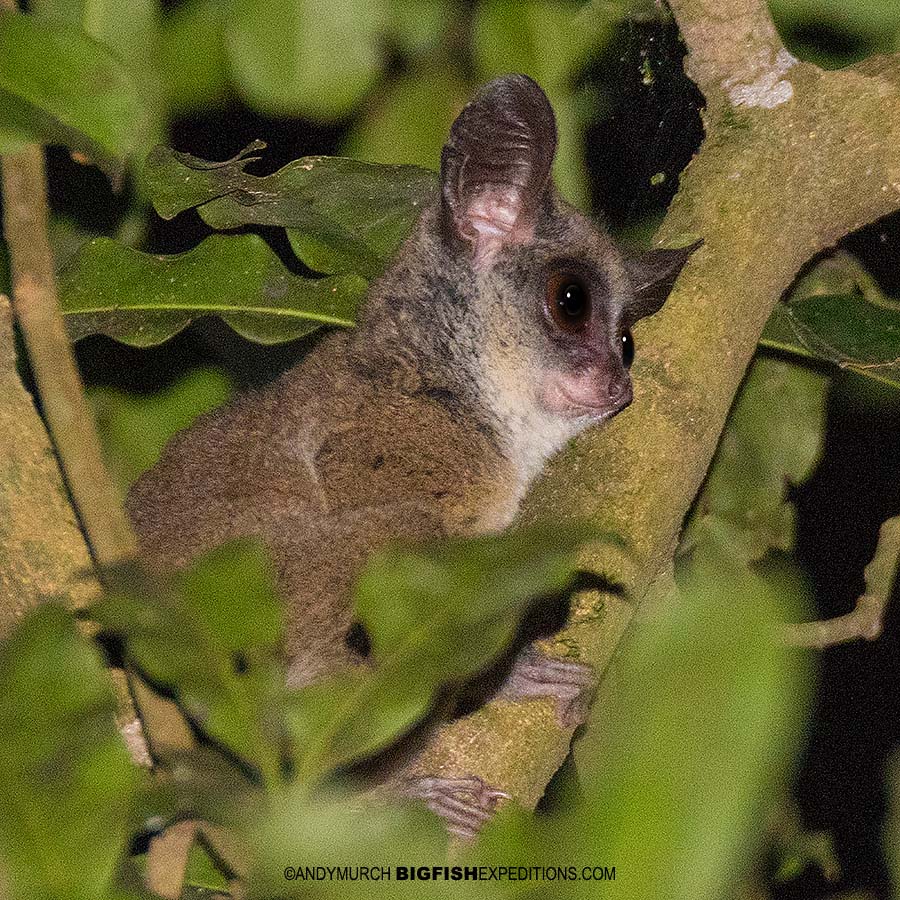
The next morning we trekked deep into Kibale looking for chimpanzees. The first family we found were high up in the trees resting. After watching them for a while we went in search of more and came across a young male following a female through the brush. The male would stop occasionally to rest while our group gathered around to take beautiful portraits.
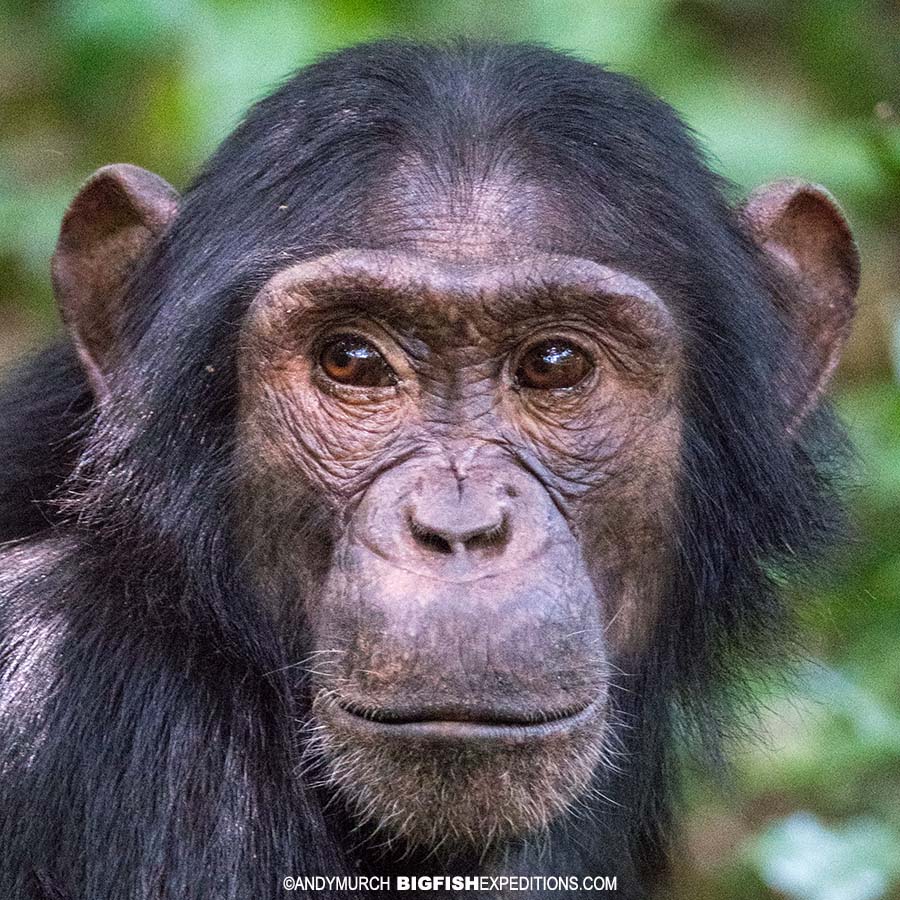
When we got back to the lodge for a well earned rest, a ‘flock’ of epauletted fruit bats appeared and landed in a tree right next to our rooms. The bats could have been any of four virtually identical species that are seen in the area so I am not sure of the exact ID but it was great to see them at close range where we could take some very detailed images of them.
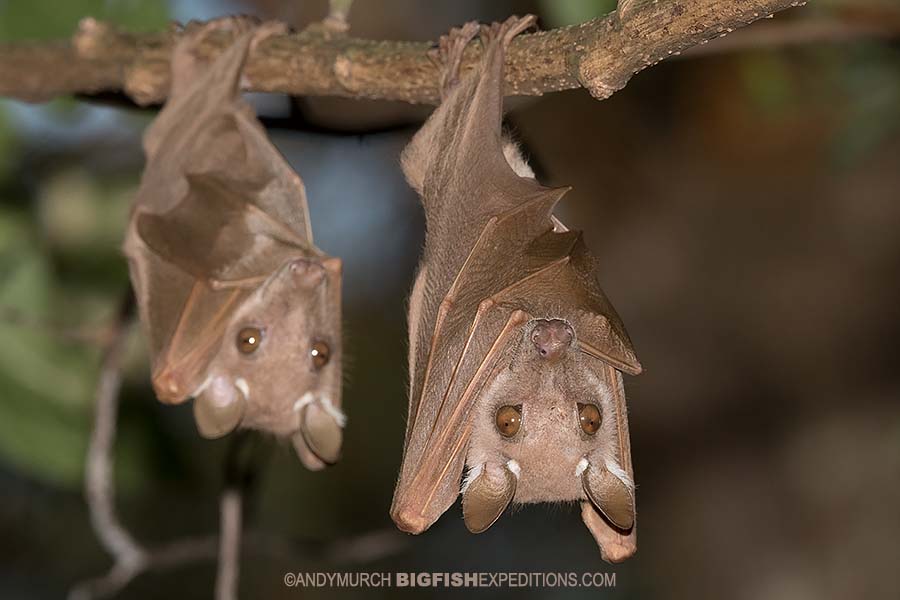
In the evening we returned to the park for another night walk. Theoretically, you can see three species of Gallegos and one species of loris that the locals call a ‘Potto’. I asked our guide how many pottos she had seen in her time there and she told me that she had only seen 2 in 5 years so I knew we were very unlikely to see one. Ten minutes into the walk, I saw a pair of eyes shining brightly in the crook of a tree and sure enough, it turned out to be a potto! The guide was thrilled as was I and I did my best to get some shots although it was a bit high up for my strobe to be effective.
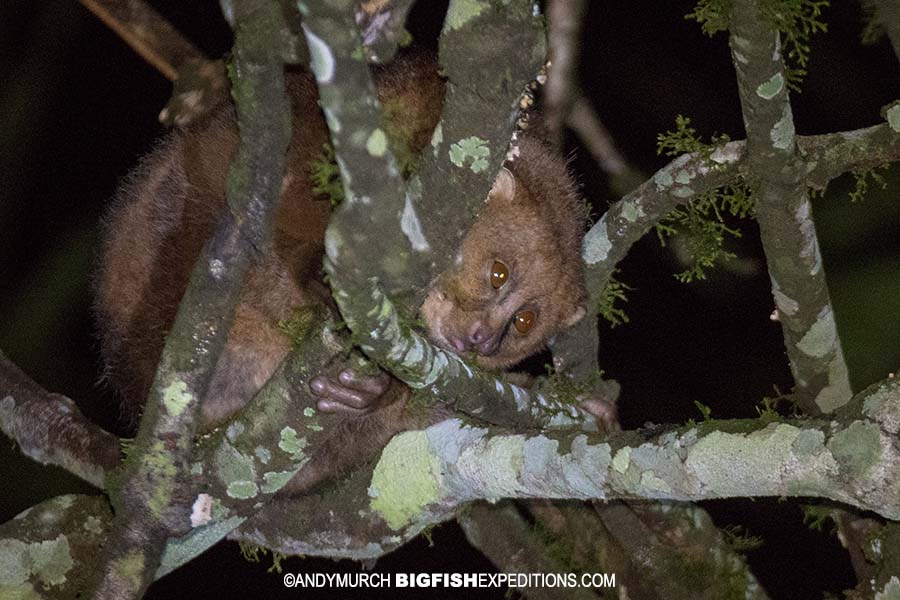
The next morning we went on a swamp walk. That sounds like a soggy experience but it more like walking around the edge of a swamp which is full of lots of colourful monkeys. Perhaps the highlight for most people was seeing families of guereza black and white colobus monkeys.
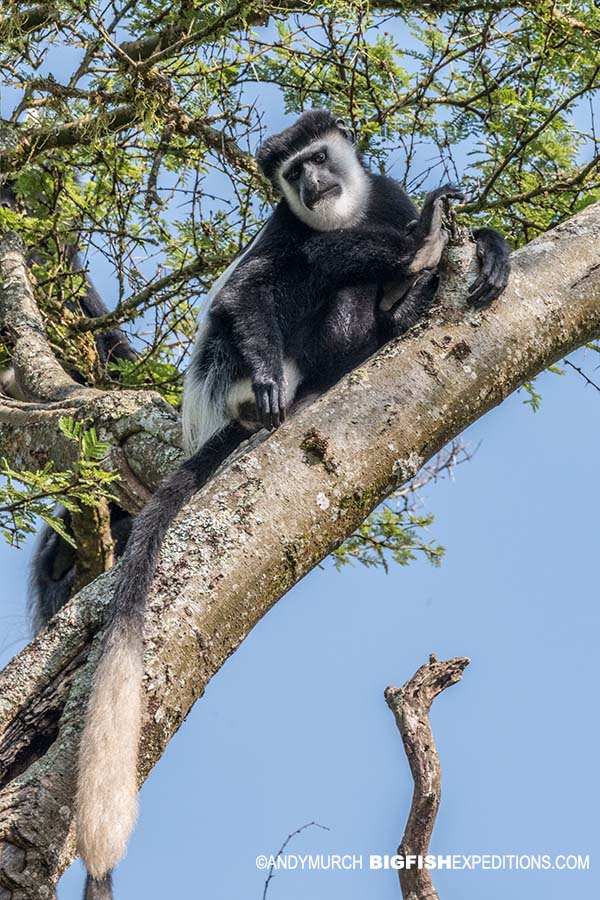
There were also lots of Ugandan Crested Mangabeys and Ashy Red Colobus Monkeys. Both are newly described endemic species that are only seen in this part of Uganda.
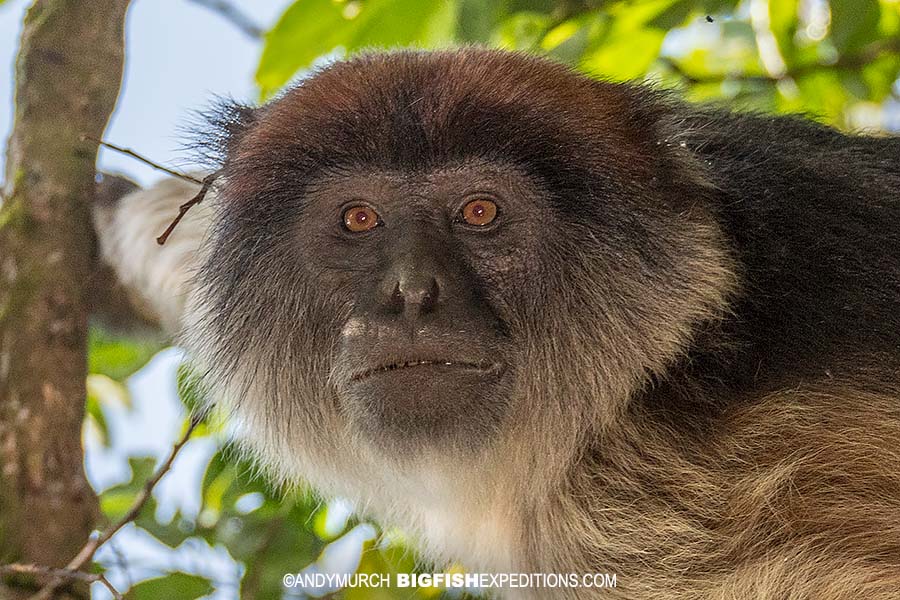
My personal favorite were the Redtail Monkeys; one of the cutest monkey species in the primate world!
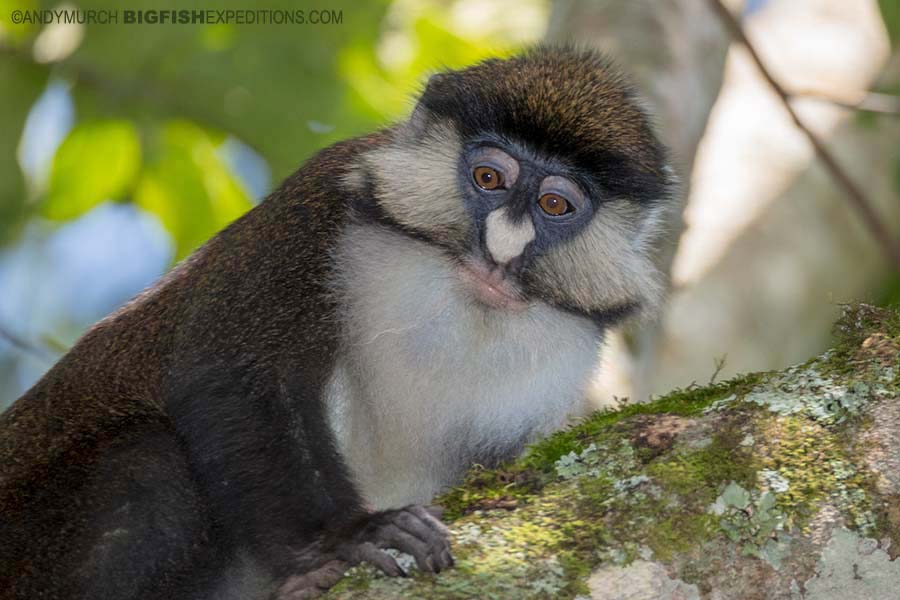
Kibale is a great place to see chameleons! At the end of our swamp tour, our guide pointed out a beautiful side-striped chameleon slowly working its way along a branch. Wonderful!
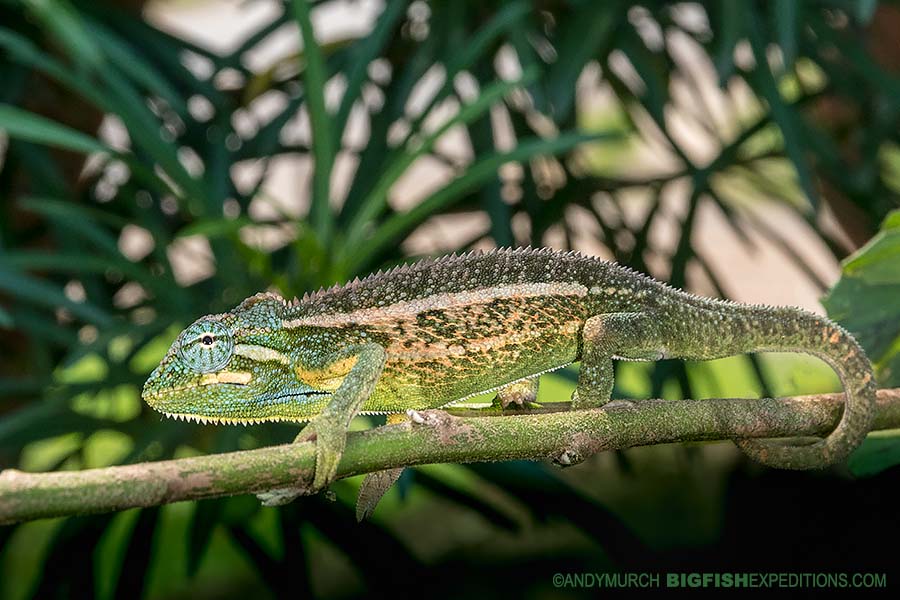
After lunch, we drove south into Queen Elizabeth National Park. There are no night drives in that park so we relaxed in the luxurious setting of Parkview Lodge. Before the sun went down, I found some vividly coloured blue headed agamas in the grounds of the lodge and snapped some nice pics.
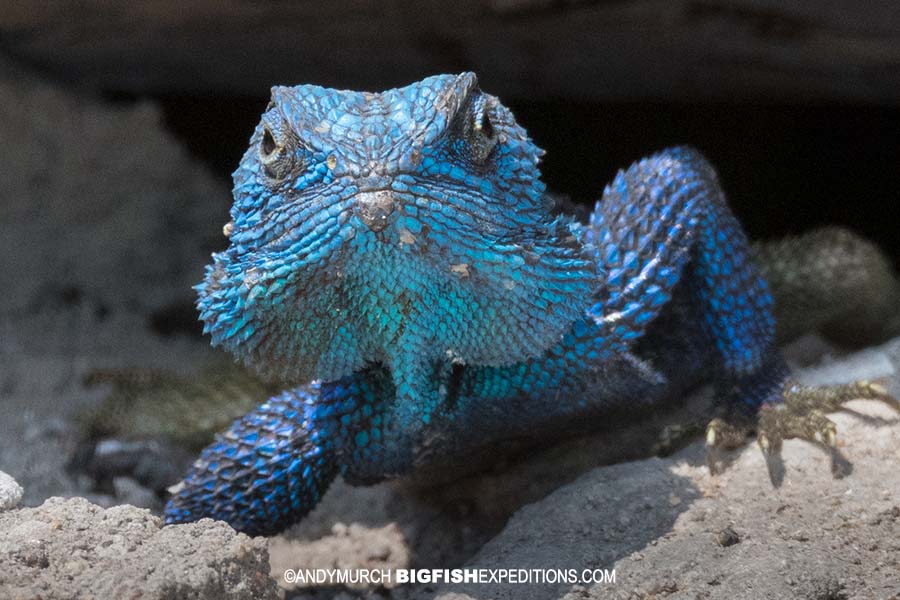
The following morning, we enjoyed a short game drive with elephants and many of the same antelopes that we had seen in Murchison. On the way back to the lodge, we stopped to photograph a family of Tantalus Monkeys; primate species #11 for this year!
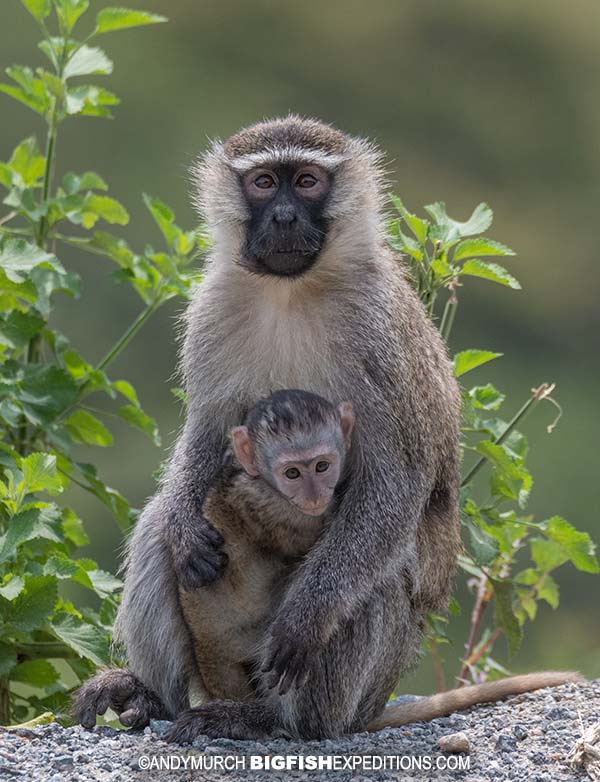
After lunch, we joined a boat tour along the Kizinga Channel. Its hard to explain how good theis part of the expedition is, but the biomass of animals the make their way down to the river is absolutely amazing. Hundreds of elephants and enormous cape buffalos line the bank. The channel itself is filled with Nile Crocodiles and huge rafts of hippos.
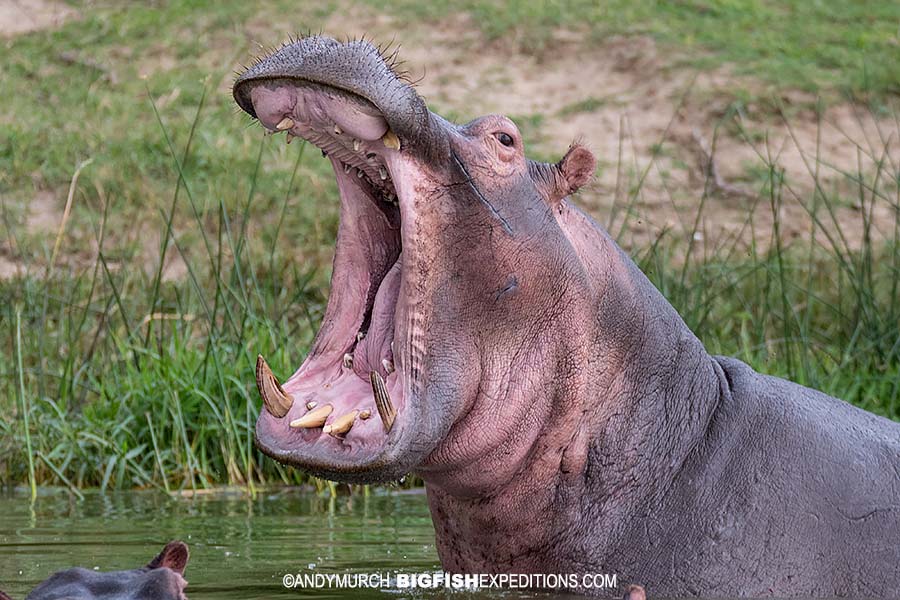
The bird life on the edges of the river is also really good. Even the non-birders on the trip were impressed!
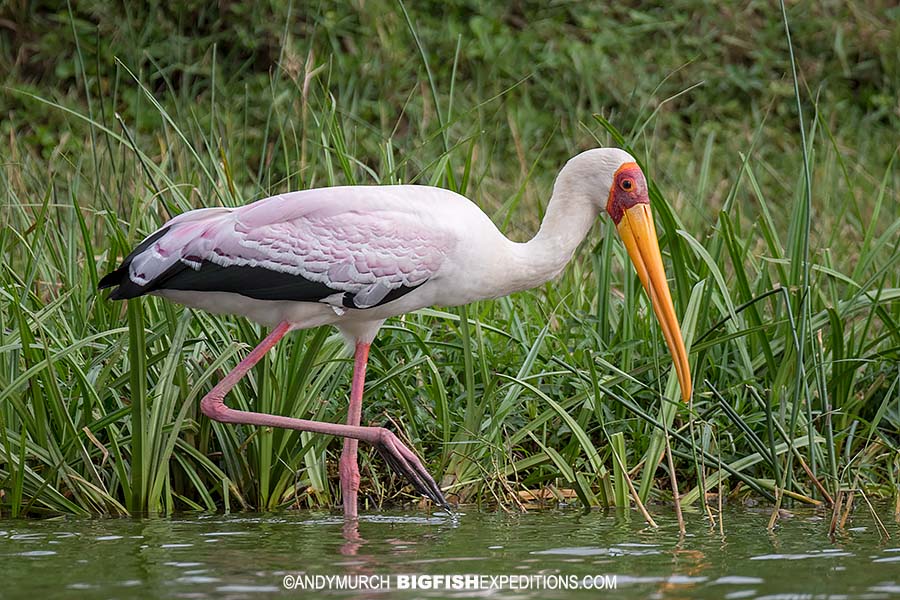
Actually, everywhere we traveled in Uganda, eagles, storks, and other large colourful birds were easy to spot. We watched this white-headed eagle snatch a fish out of the channel and devour it on the bank next to another local bird called a Hammercop.
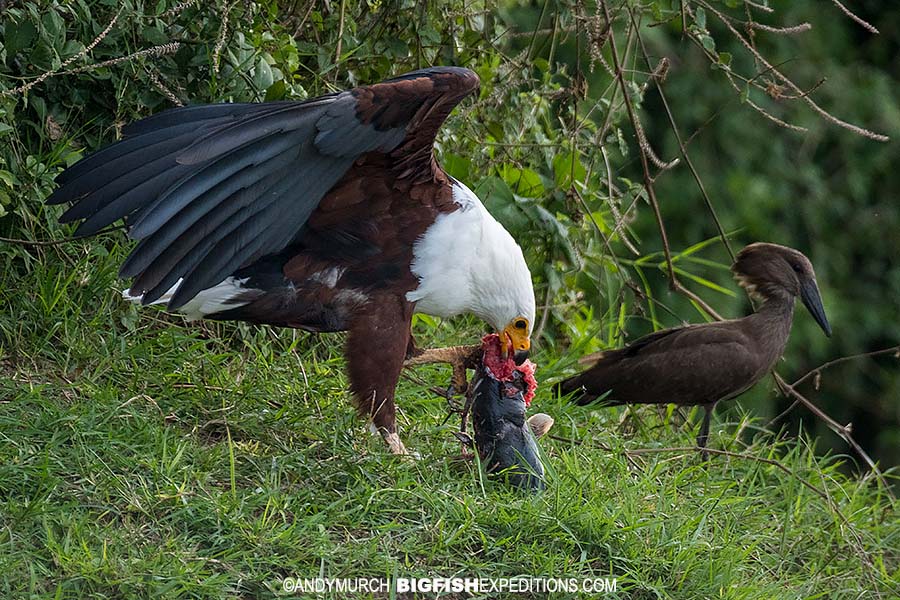
Before heading back to the lodge, we stopped at a village where a habituated troop of banded mongooses can be see. There were around 20 or so mongooses wandering around the village, digging for grubs in the dirt. They let us walk right up to them for images which was a nice surprise for our guests because mongooses are usually extremely shy.
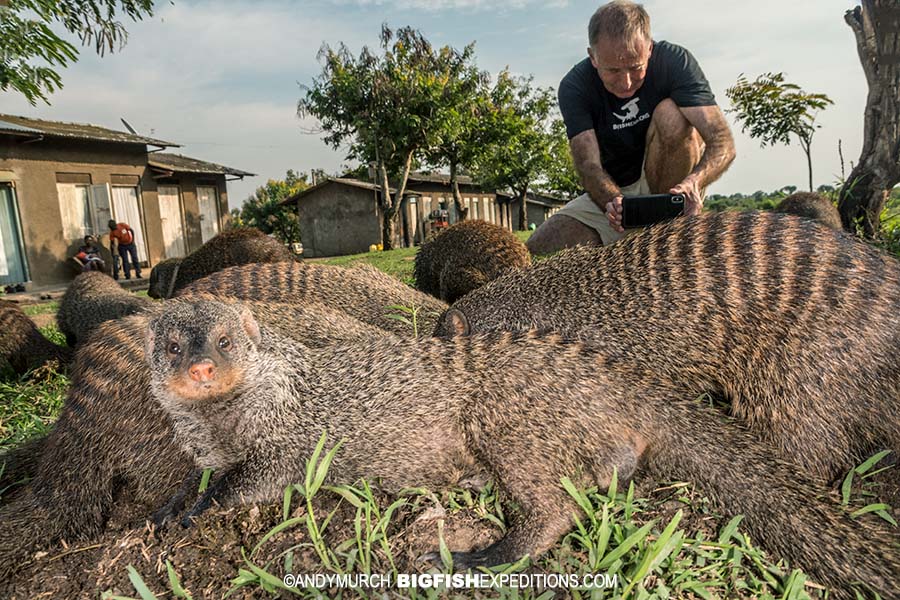
We spent the next morning we driving south through the park, emerging close to Bwindi Impenetrable Forest in the early afternoon. Along the way we were treated to many more encounters including a respectably large herd of Topi; a black-faced antelope similar to a hartebeest.
Later, while relaxing at the lodge in Bwindi, we had a surprise visit from a L’hoest’s Monkey that stopped to stare at us for a few minutes before continuing on its merry way. Fortunately, I always keep my camera handy and managed to snap a few shots of primate number 12.
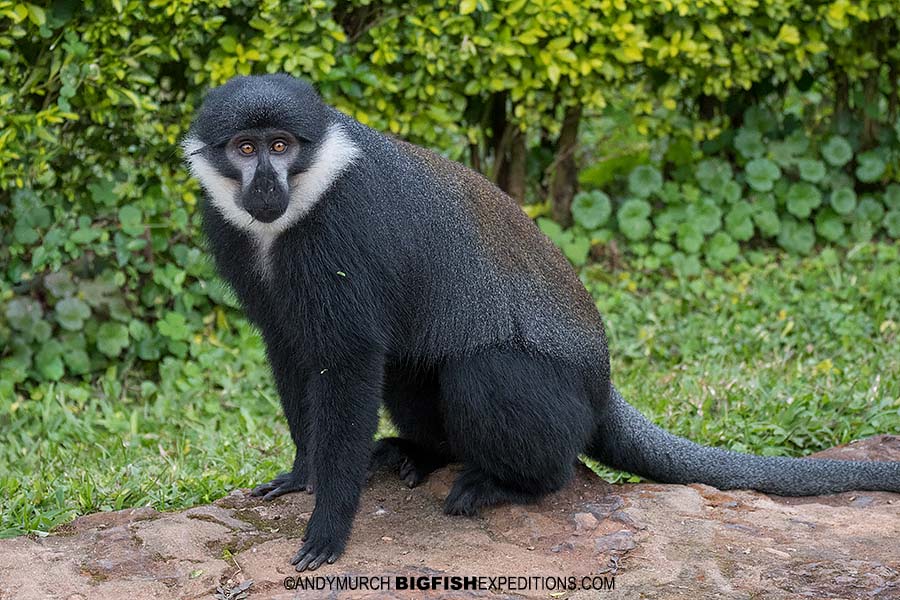
The next day we awoke early for the main event. We spent the morning climbing into this magical forest in search of gorillas. The family we visited had 15 members, including numerous young juveniles that spent their time play fighting with each other.
Occasionally, a mother would pass by with a newborn clutching tightly to her back. The silverback sat nearby; relaxed but ready to intervene if an intruder or one of our guests got too close to his precious offspring.
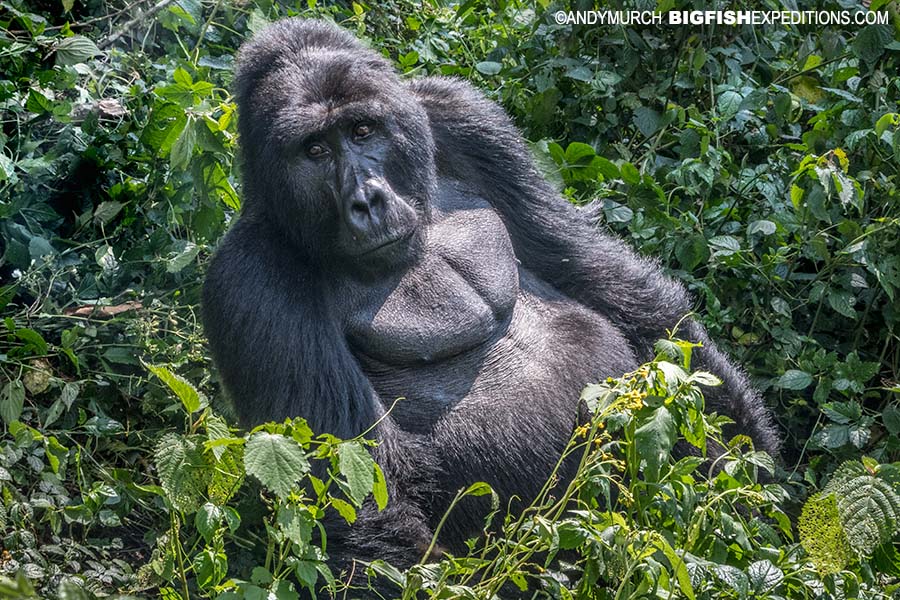
The time we spent among gorillas was a lovely end to a fabulous trip. The next day we drove back to Entebbe but the encounters were not over. First we stopped to photograph a huge colony of straw-coloured fruit bats that we stumbled upon last year.
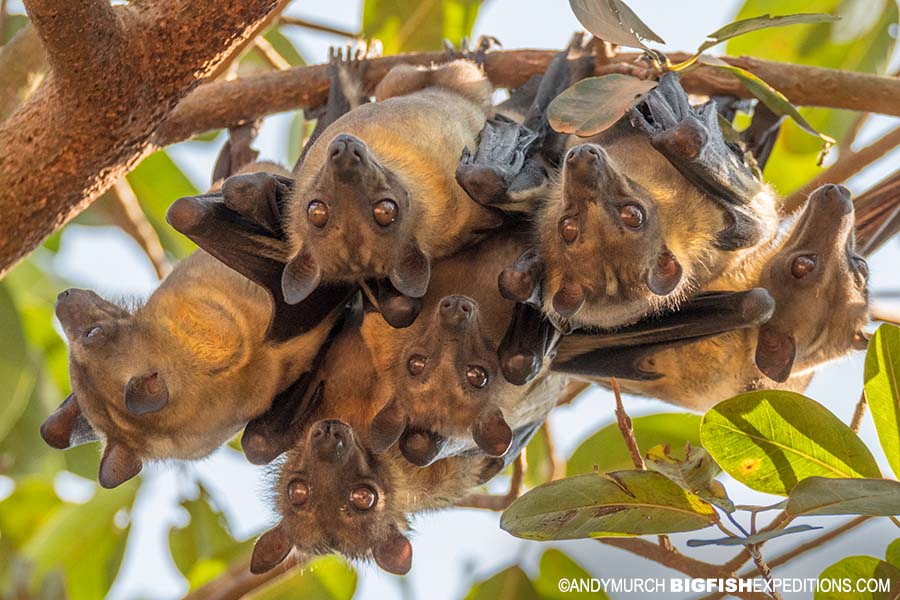
And finally, we pulled over for lunch at Lake Mburo National Park where it is common to see herds of Burchell’s Zebra grazing in the scrublands at the edges of the park.
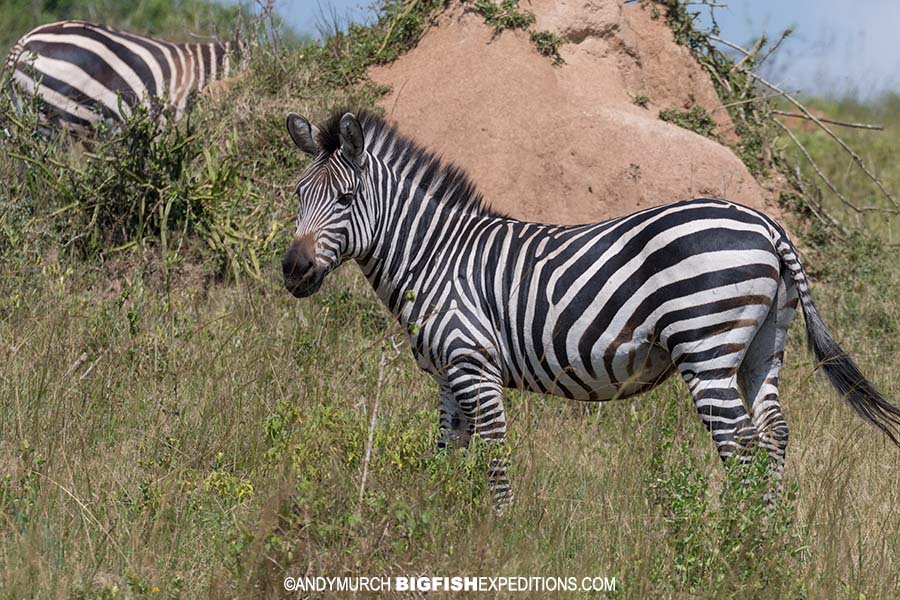
After a pit stop for a group photo at the equator, we arrived in Entebbe and said our farewells. Another incredible Ugandan adventure had come to an end.
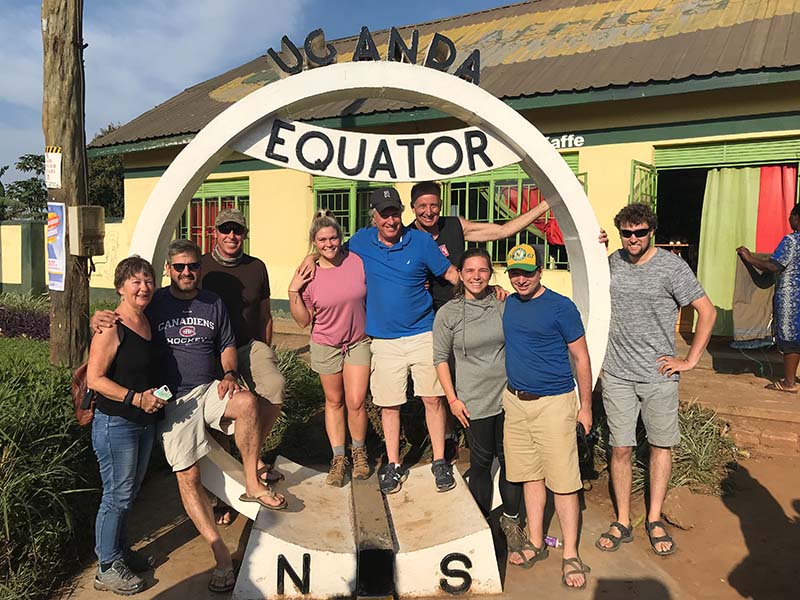
Next year, we want to add even more encounters so we’re going to change things up a bit. Murchison is the opposite direction to all the other parks that we visit so we are going to offer Murchison Falls as a stand-alone 4 day expedition that guests can add on to their primate safari, before or after the main trip.
This will give us the chance to visit Mgahinga National Park after we go to Bwindi. Mgahinga is another beautiful volcanic peak topped with a huge bamboo forest populated with many species of animals including a large habituated troop of Golden Monkeys.
